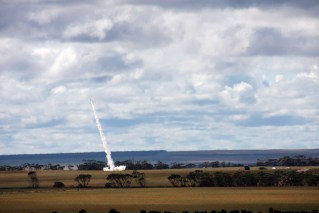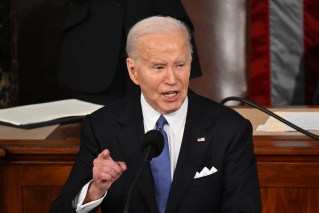The Stats Guy: What does tourism in Australia look like now that travellers are returning?


The tourism sector has suffered immensely under lockdown restrictions, but it is now preparing for a massive comeback. Photo: TND
The international terminals at our airports looked like busy beehives before the pandemic.
During the lockdowns, we’ve learned that empty terminals look like the set of a creepy zombie movie.
As of May 2022, all state borders are open (I am writing this column in a hotel room in WA) and more international destinations allow travel every month.
The tourism sector has suffered immensely under lockdown restrictions, but it is now preparing for a massive comeback. So, what is the state of play in the sector and what are the biggest challenges it will have to face?
The ABS counts the number of overseas arrivals into the country. From February 2020 to April 2020, the tap was turned off and arrivals fell from 1.6 million people to less than 20,000. It needed a pandemic for us to understand just how big the business of tourism is.
Numbers stayed extremely low for 20 months. A few expat Aussies and a tiny number of professionals were allowed to travel internationally. For what it’s worth, the travel and tourism industry just stopped.
International travel doesn’t just kick back into full gear from one day to the next. Airlines slowly add new routes, some international travellers are still hesitant to travel, many countries retain restrictions on free movement, plus the big summer holidays in the Northern Hemisphere are still a few months away.
The last six months have seen international arrivals grow from just 20,000 in October 2021 to 580,000 in April 2022. While the April figure is 29 times bigger than the October figure, it still falls short of the pre-pandemic April arrivals of 1.7 million people.
Who has returned to travel and who is still staying at home? The ABS sure has the answers for that!
Let’s compare the latest arrival numbers for March 2022 by category with the long-term, pre-COVID average for March (2015-19). Overall, arrival volumes are up to 24 per cent of the old normal.
Arriving travellers are split into two main categories. Permanent or long-term arrivals (more than 12 months) and short-term arrivals (less than 12 months).
Australian expats couldn’t return home for close to two years, but recent months have seen them come back in large numbers. The March figure was 166 per cent of the long-term average. Long-term visitors (96 per cent) and permanent arrivals (69 per cent) are coming close to pre-pandemic levels.
The two short-term groups (essentially Aussie tourists returning home and tourists coming to Australia) still have a lot of room to grow. Both groups stand at 21 per cent of the pre-COVID level.
Once Aussies travel overseas at scale, we will naturally see them return at scale. That won’t happen as long as destination countries have strong travel restrictions in place and before more international flights are added.
Who are the international visitors that are already coming back to Australia? The Chinese lockdowns impact Australia in many ways, the rising cost of imports being one of them. The lack of Chinese tourists and international students is the other one. As of March 2022, our arrival intake from China sits at a sad four per cent of the long-term, pre-pandemic benchmark.
Our Kiwi neighbours haven’t resumed their frequent trips to our shores yet, either (17 per cent of pre-Covid normal). Americans are back at 20 per cent, while the UK sits at a stronger 38 per cent. The good news is that Indians are already travelling to Australia in high numbers (52 per cent).
All states and territories are looking forward to increased tourism income. Tourism Research Australia measures how much economic value is added by the tourism sector in each region. For now, we can ignore the total dollar amount that tourists might add. Let’s instead focus on the share that international visitors add to each state.
New South Wales and Victoria depend more heavily on international tourists than the other states. The two largest states send their residents as visitors interstate, while big events in the two largest states attract international visitors. Plus, migrants in the two states attract international tourism as friends and family fly in to visit.
The trend is your friend. Visitation figures are moving up sharply and we will soon be reaching pre-COVID tourism levels. All is well in paradise, then? Hardly; our local tourism sector faces a lot of challenges.
Like in any other industry, prices for all business inputs will rise. My advice here is the same as in every other industry. Invest in high-quality goods, materials and technology. Businesses can save money in the long run as replacement and renovation cycles are lengthened.
The bigger issue is the skills shortage in combination with a lack of housing. Hospitality businesses around the country already struggle to find enough workers. How will they cope later in the year when more tourists arrive?
Many of the jobs that tourist operators and hospitality venues in tourist hotspots have to offer are relatively low in pay. Can a business expect workers to relocate for minimum wage jobs? The minimum hourly wage is only $20.33, adding 25 per cent for casual loading to arrive at $26.95. It’s unlikely that a tourist operator could convince workers to relocate for such low pay. Even if they were to find a worker that was willing to do so, they’d have no affordable housing options available.
So, the never-ending affordable housing discussion enters our discourse about tourism. Tourist operators who want to convince workers to relocate need to think outside the box and offer a full package to their workers that include pay, lifestyle in a desirable location and affordable housing.
Sorrento, on Melbourne’s Mornington Peninsula, is a tourist magnet and a notoriously expensive place to live. Two Christmases ago, local restaurants had so few staff available that they had to serve 40-dollar meals on paper plates because there was simply no one available to do the dishes.
A Sorrento landmark, the old Continental Hotel was bought and renovated by a group of investors. To ensure guests can eat from real plates, the investors also bought an old retirement village which they will transform into cheap rental accommodation for their future employees.
Granted, that is a big solution to a big problem. Not all tourism providers will have pockets deep enough for such an investment. Maybe smaller tourist businesses should team up and start providing housing for their future workers too.
Big growth in tourism is coming (interstate as well as international). Now is the time to prepare for this surge, now is the time to think big.








